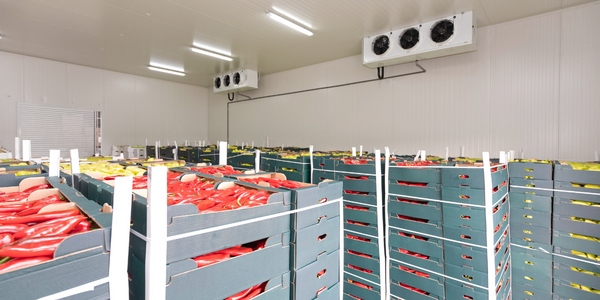One Care: Tripspark’s Demand Response/NEMT Software: The Solution That Increased Operational Efficiency and Partner Satisfaction
Customer Company Size
Large Corporate
Region
- America
Country
- Canada
Product
- DriverMate
- NovusDR
- TripSpark Demand Response/NEMT Software
Tech Stack
- Demand Response Software
- NEMT Software
- Scheduling Software
- Routing Software
- Billing Software
Implementation Scale
- Enterprise-wide Deployment
Impact Metrics
- Customer Satisfaction
- Employee Satisfaction
- Productivity Improvements
- Cost Savings
Technology Category
- Functional Applications - Fleet Management Systems (FMS)
- Functional Applications - Remote Monitoring & Control Systems
- Functional Applications - Enterprise Resource Planning Systems (ERP)
Applicable Industries
- Healthcare & Hospitals
- Transportation
Applicable Functions
- Field Services
- Logistics & Transportation
- Business Operation
Use Cases
- Fleet Management
- Predictive Maintenance
- Remote Asset Management
- Remote Control
- Public Transportation Management
Services
- Software Design & Engineering Services
- System Integration
- Training
About The Customer
One Care Home & Community Support Services is a community-based, charitable, not-for-profit Canadian health organization providing supportive care to families in Huron and Perth Counties and the surrounding areas. One Care’s EasyRide™ transportation service is shared by Community Support agencies and provides transportation to older adults and frail elderly living within their service communities. One Care’s mission is to support and strengthen the health, independence, and quality of life for individuals and their families.
The Challenge
One Care was challenged with poor solutions for effective client communications and services coordination. Information sharing was inconsistent and governance structure varied from one agency to another. At the time, each agency had unique eligibility criteria, funders, funding levels, values, interests, and vehicle and equipment. Under their fragmented operations structure, other agencies and potential clients found it difficult to access One Care’s services. As a result, business was suffering. One Care urgently needed a management system and software solution to keep communication strong and access to information a priority. Another challenge that One Care faced was gaining consensus from their clients and partners. As small Community Support Service Agencies typically have staffing limitations, finding the time to gather and present proposed solutions to agencies was a major undertaking.
The Solution
Upon completing a thorough assessment of their partners’ needs, challenges, and opportunities, One Care was able to confidently recommend a plan to deploy TripSpark’s demand response/NEMT software for dispatching, routing, scheduling, billing, and more. One Care’s partner agencies quickly approved the TripSpark proposal once they realized the measurable benefits of the single-source software solution, including streamlined office work, improved communication, immediate and accurate data collection, streamlined planning and scheduling procedures, intuitive, user-friendly, and fun-to-use software, and software with an industry-leading algorithm. One Care began using TripSpark’s demand response/NEMT software in 2009, and they very quickly started experiencing measurable improvements in key service metrics.
Operational Impact
Quantitative Benefit

Case Study missing?
Start adding your own!
Register with your work email and create a new case study profile for your business.
Related Case Studies.

Case Study
Airport SCADA Systems Improve Service Levels
Modern airports are one of the busiest environments on Earth and rely on process automation equipment to ensure service operators achieve their KPIs. Increasingly airport SCADA systems are being used to control all aspects of the operation and associated facilities. This is because unplanned system downtime can cost dearly, both in terms of reduced revenues and the associated loss of customer satisfaction due to inevitable travel inconvenience and disruption.

Case Study
Hospital Inventory Management
The hospital supply chain team is responsible for ensuring that the right medical supplies are readily available to clinicians when and where needed, and to do so in the most efficient manner possible. However, many of the systems and processes in use at the cancer center for supply chain management were not best suited to support these goals. Barcoding technology, a commonly used method for inventory management of medical supplies, is labor intensive, time consuming, does not provide real-time visibility into inventory levels and can be prone to error. Consequently, the lack of accurate and real-time visibility into inventory levels across multiple supply rooms in multiple hospital facilities creates additional inefficiency in the system causing over-ordering, hoarding, and wasted supplies. Other sources of waste and cost were also identified as candidates for improvement. Existing systems and processes did not provide adequate security for high-cost inventory within the hospital, which was another driver of cost. A lack of visibility into expiration dates for supplies resulted in supplies being wasted due to past expiry dates. Storage of supplies was also a key consideration given the location of the cancer center’s facilities in a dense urban setting, where space is always at a premium. In order to address the challenges outlined above, the hospital sought a solution that would provide real-time inventory information with high levels of accuracy, reduce the level of manual effort required and enable data driven decision making to ensure that the right supplies were readily available to clinicians in the right location at the right time.

Case Study
IoT-based Fleet Intelligence Innovation
Speed to market is precious for DRVR, a rapidly growing start-up company. With a business model dependent on reliable mobile data, managers were spending their lives trying to negotiate data roaming deals with mobile network operators in different countries. And, even then, service quality was a constant concern.

Case Study
Digitize Railway with Deutsche Bahn
To reduce maintenance costs and delay-causing failures for Deutsche Bahn. They need manual measurements by a position measurement system based on custom-made MEMS sensor clusters, which allow autonomous and continuous monitoring with wireless data transmission and long battery. They were looking for data pre-processing solution in the sensor and machine learning algorithms in the cloud so as to detect critical wear.

Case Study
Cold Chain Transportation and Refrigerated Fleet Management System
1) Create a digital connected transportation solution to retrofit cold chain trailers with real-time tracking and controls. 2) Prevent multi-million dollar losses due to theft or spoilage. 3) Deliver a digital chain-of-custody solution for door to door load monitoring and security. 4) Provide a trusted multi-fleet solution in a single application with granular data and access controls.







